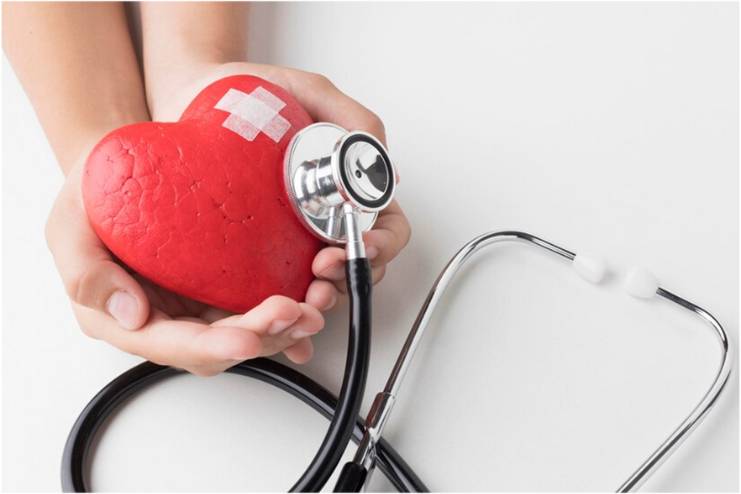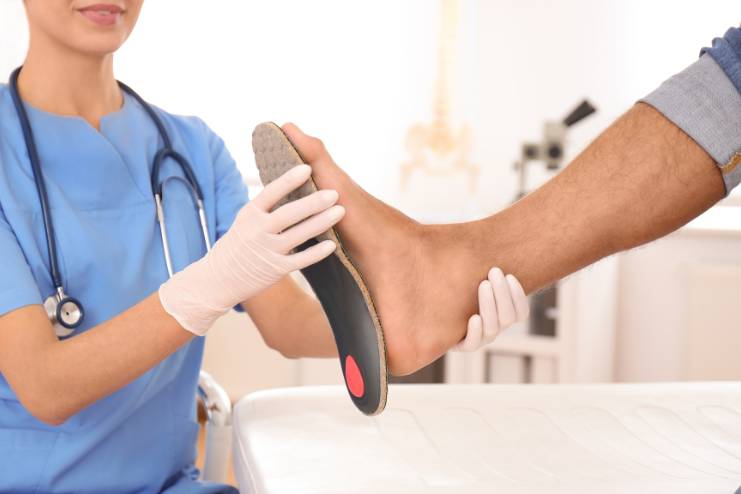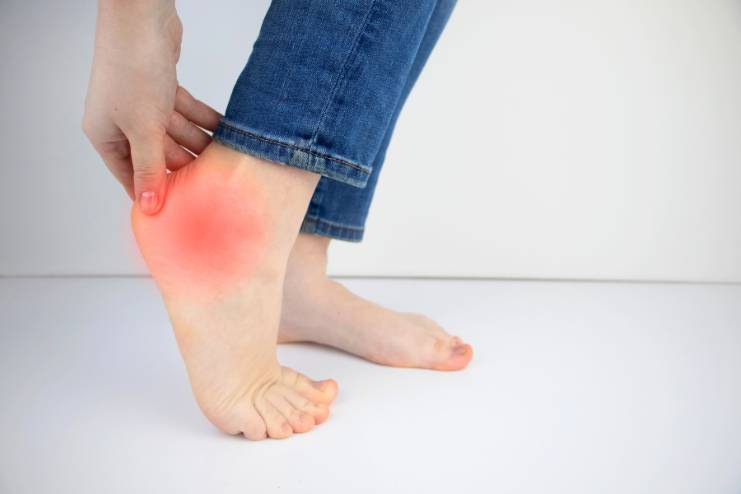Affiliate Disclaimer
Some links in this article are affiliate links. We may earn a small commission if you make a purchase through these links, at no extra cost to you. We only recommend products we find useful to our readersEdema, is a condition where fluid builds up in the tissues of the lower legs. This normally appears as puffiness or swelling in the legs, ankles, and feet, leaving a person uncomfortable and, at times, in pain. This is usually caused by water retention in the legs, partially related to lifestyle factors such as standing for long periods or consuming too much salt. Nevertheless, severe or persistent swelling may be a symptom of other serious health conditions that relate to heart, kidney, or liver problems.
In this article, we look at common causes of swelling in the ankles and practical tips for relief.
Common Causes of Swollen Ankles
A number of conditions and lifestyle choices can cause swollen ankles. Understanding these will help in effective treatment.
1. Lifestyle Factors

- Prolonged Standing or Sitting: Standing on your feet for hours causes fluid to collect in the lower legs, which can lead to swelling. For people working at jobs that involve standing for long hours, this is pretty common. The swelling usually subsides after resting or elevating the legs. For relief, consider taking short breaks, using compression stockings, or propping your legs up.
- Obesity: Excess body weight increases pressure on the veins in the legs, which allows fluid to build up. In such a case, weight loss will not always alleviate swelling, though it might reduce the severity of the condition. The patient needs to seek medical advice for proper treatment.
- Pregnancy: Because of the higher levels of blood volume and other body fluids during pregnancy, more fluid begins to circulate, most of it building up in the legs, ankles, and feet. This is usually normal, especially in the third trimester. If a sudden puffiness of the hands or face occurs, then it could be a symptom of preeclampsia and thus dangerous.
- Menstruation: Changes in hormones associated with menstruation may be the cause of occasional water retention and swelling of legs, feet, and ankles. This is a common symptom of PMS and generally resolves following the onset of the menstrual flow.
- Hot Weather: This is sometimes referred to as heat edema and can be worsened by previously existing circulatory conditions.
Also, read: 10 Effective Exercises Get Rid of Cankles
Medical Conditions

- Heart Problems (Congestive Heart Failure): When the heart pumps blood poorly, fluid can collect in the legs, leading to swelling. This often is a sign of right-sided heart failure. Other symptoms may include abdominal pain, nausea, and rapid weight gain.
- Kidney Disease: Poor renal function could cause the body to retain fluid. Infrequent urination, shortness of breath, and drowsiness are some of the symptoms related to severe kidney malfunction. Read more: 12 Ways To Maintain Good Kidney Health – Know The Dos!
- Liver Disease: Water retention in the legs, ankles, and abdomen caused by poor functioning of the liver. The liver produces albumin, a protein that helps prevent fluid from leaking out of blood vessels. Read more about the – Early Signs of Liver Disease in Adults
- Blood Clots (Deep Vein Thrombosis): Blood clots in leg veins hinder blood flow, which causes swelling, pain, and warmth to the area. Immediate medical attention is essential to manage DVT and prevent complications.
- Medications: Vasodilators, calcium channel blockers, and some chemo agents have been associated with swelling. Consult your doctor if you suspect your medication is causing edema.
Injuries
- Sprains, Strains, or Fractures: This mostly results in localized swelling around the ankle or the foot due to inflammation from injury. The treatment is mostly done by RICE (rest, ice, compression, and elevation). NSAIDs can be prescribed to reduce swelling and pain.
Read More: Live Pain-Free with Gout: Essential Tips for Managing and Preventing Flare-Ups
Preventing Swollen Ankles
Here are some effective ways to reduce swelling:
Lifestyle Modifications

- Regular Exercise: This will make the blood circulate properly, hence discouraging the accumulation of fluids. Try to have half an hour of moderate exercise at least; it can just be walking daily. This helps keep your blood flowing and might reduce your chances of having swollen legs.
- Elevating Legs: Raise your legs above the level of your heart as much as possible, especially after you have been standing or sitting for an extended period. This can aid in reducing swelling, thereby bringing fluid back into the upper body.
- Compression Stockings: Compression stockings can be useful in managing swelling through the exertion of gentle pressure onto the legs. This also enhances blood circulation and can help in the retention of fluids. They are most useful to those suffering from venous insufficiency or lymphedema. Begin by trying lighter levels of compression and adjust based on comfort.
- Managing Weight: Pressure on veins increases with increasing body weight and thus increases the risk of swelling. Obesity can worsen fluid retention. Therefore, maintaining a balanced diet and a regular exercise regime shall keep the weight in check while preventing swollen legs.
- Limiting Sodium Intake: High levels of sodium can cause fluid retention which leads to swelling. Cut back on salty foods and choose low-sodium alternatives, such as reading food labels and using fresh ingredients.
- Staying Hydrated: It is important to have adequate hydration in order to maintain your body fluids. Sufficient water can prevent fluid retention in the body. In fact, drinking 8 – 12 glasses of water in a day is advised, based on individual needs.
Also, read: 6 Reasons Why You Can’t sit Cross-Legged – Which is bad
Medical Management

- Address Underlying Health Conditions: Many underlying diseases, such as heart diseases, renal disorders, and liver diseases, can cause ankle swelling. It is, therefore, very important to keep them under control with the help of a healthcare professional in order to prevent and alleviate edema.
- Consult a Healthcare Provider: In case of prolonged or severe swelling, it is always recommended to consult with your doctor. They will help you identify severe underlying conditions and also give tailored advice with treatment options.
By incorporating these preventive measures, it would become easy to manage and reduce swollen ankles. If there is a pre-existing health condition or if, at any point in time, one experiences sudden, excessive swelling, one should consult a doctor for proper care and treatment.
When to Seek Medical Attention

At times, swollen ankles may be symptomatic of very serious underlying diseases. Knowing when it might be more than ‘just swelling’ is critical to seeking medical advice in time.
Signs of Serious Conditions:
- Severe Pain: Severe pain with swelling can be indicative of serious conditions, either due to clotting or infection.
- Redness and Warmth: Swelling accompanied by redness or warmth in the affected limb may indicate infection or deep vein thrombosis.
- Difficulty Breathing: Shortness of breath, mostly if associated with swelling, may indicate a heart condition or pulmonary embolism and require immediate medical attention.
- Sudden or Severe Symptoms in Pregnancy: Pregnant women, if they have excessive swelling, particularly if sudden onset occurs, or if swelling is accompanied by other symptoms such as headache or problems with vision, should contact their health care provider immediately.
- Importance of Early Diagnosis and Treatment: Early diagnosis can prevent complications and result in better treatment outcomes.
Conclusion
Swollen ankles could be due to various reasons, ranging from lifestyle and diseases to injury. It is usually controlled with simple lifestyle changes, including regular exercise, maintaining an ideal weight, and including a healthy diet. If it persists or worsens, it may indicate a serious problem.
Early intervention is critical to dealing with the underlying condition causing complications. Some of the most effective ways to deal with and reduce the risk of swollen ankles are to elevate your legs and drink enough water.
References
- https://www.health.com/condition/heart-failure/swollen-feet
- https://www.medicalnewstoday.com/articles/324324
- https://www.healthline.com/health/swollen-ankle-and-leg
- https://www.beebehealthcare.org/health-hub/womens-health-blog/7-easy-ways-reduce-your-swollen-ankles
- https://www.healthline.com/health/home-remedies-for-swollen-feet
In this Article




















